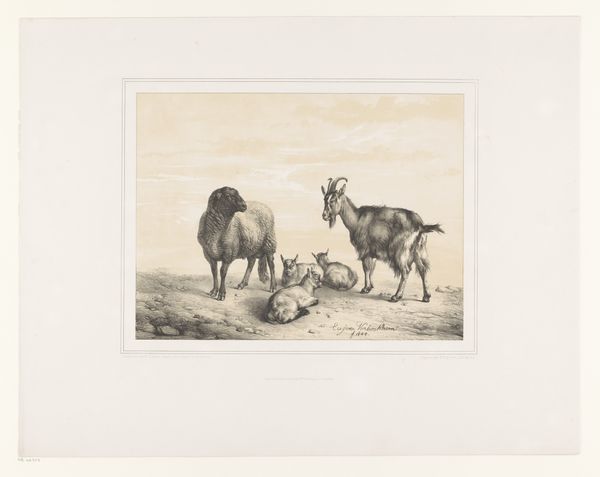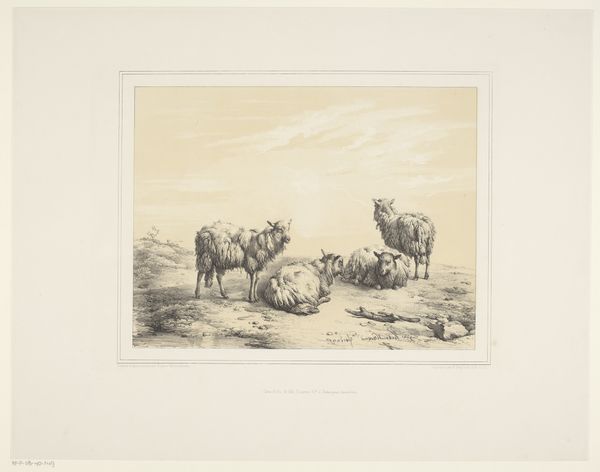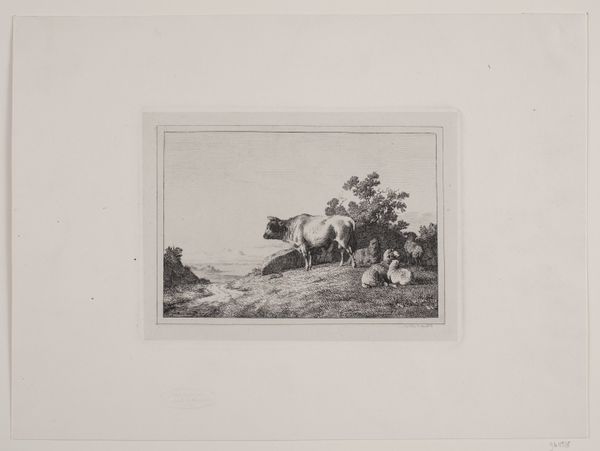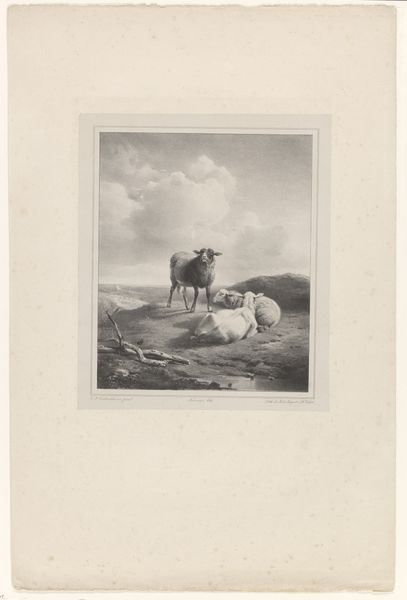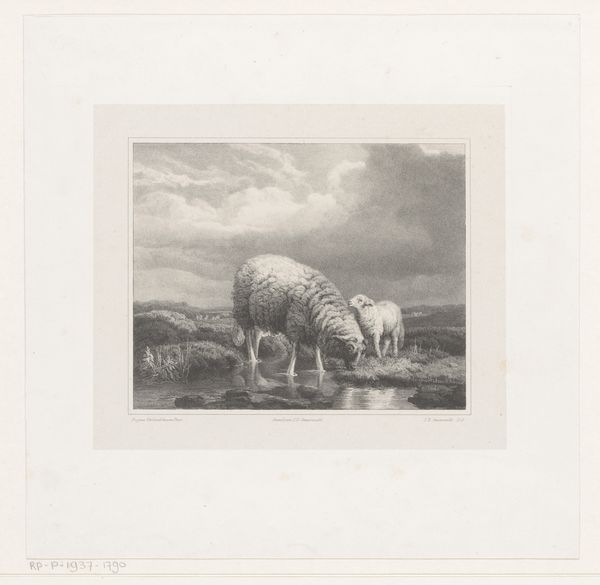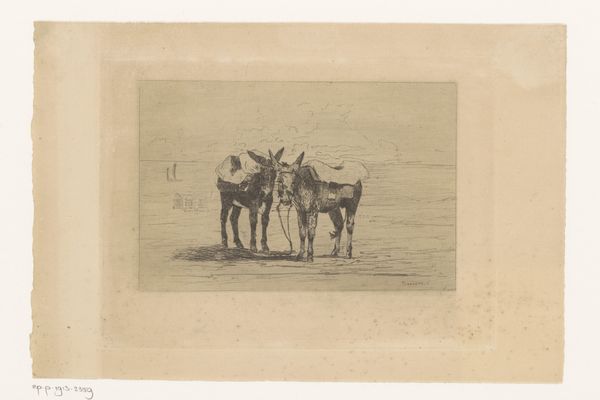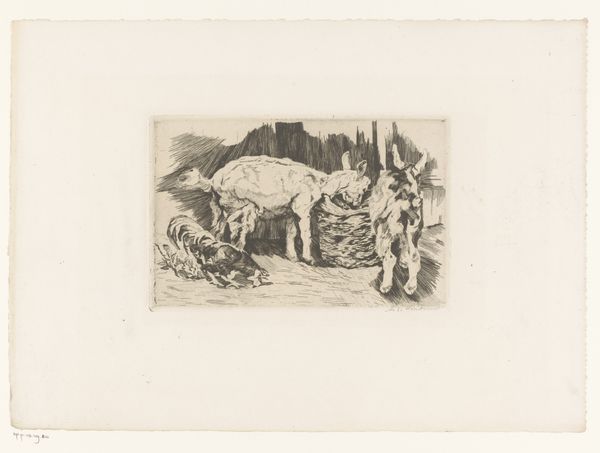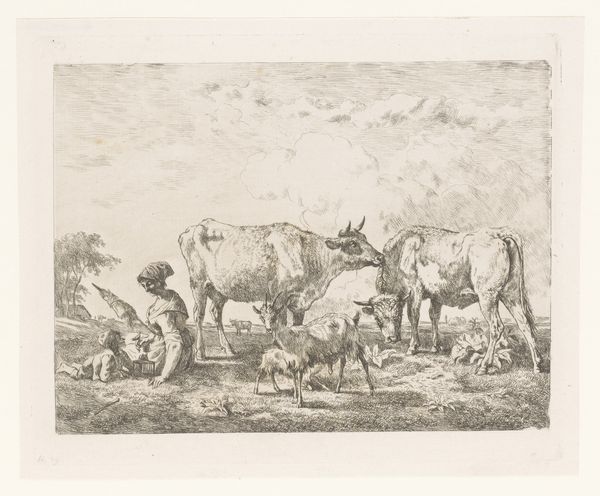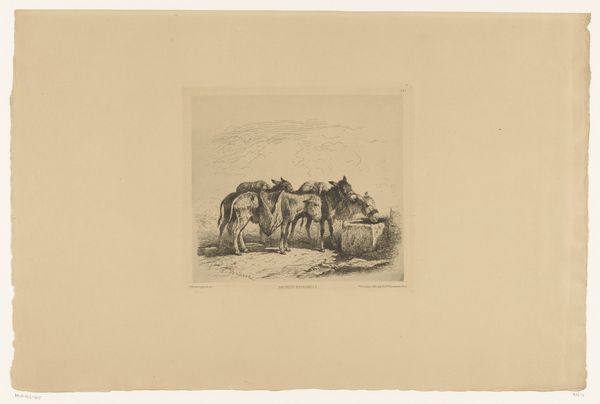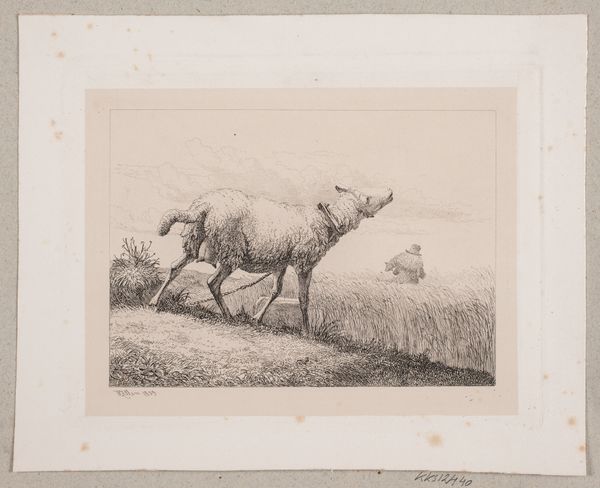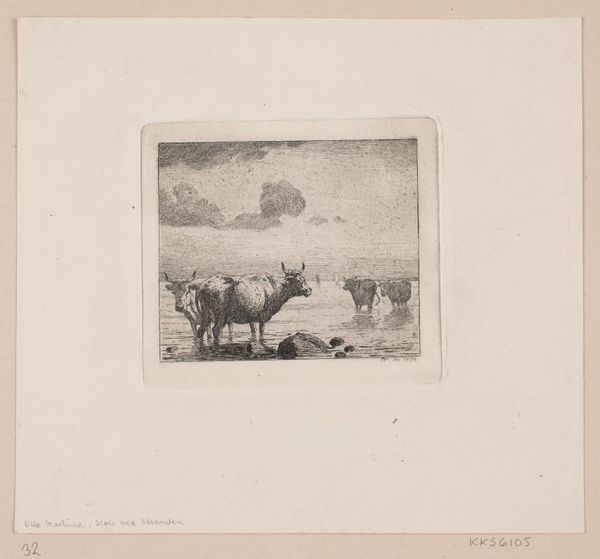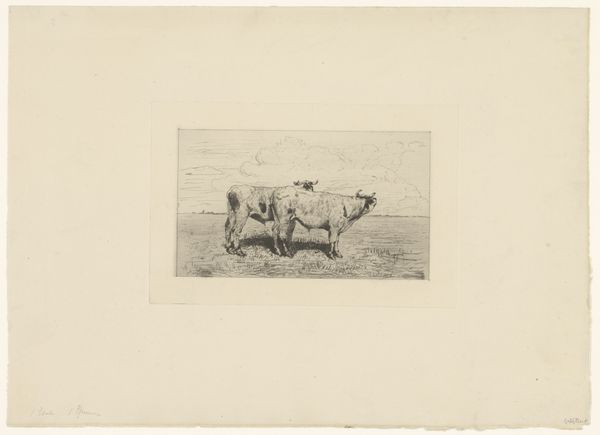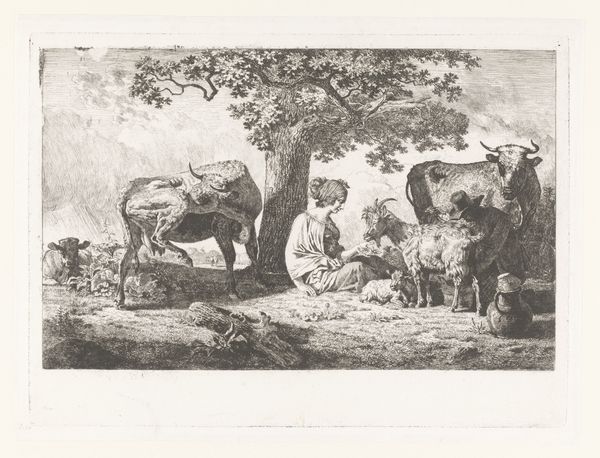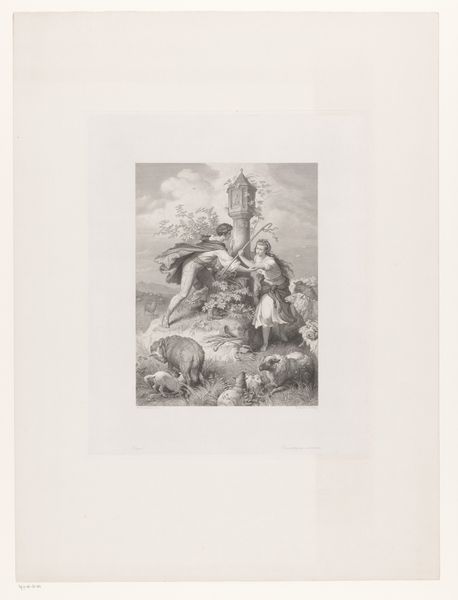
drawing, graphite
#
drawing
#
landscape
#
romanticism
#
graphite
#
genre-painting
#
realism
Dimensions: height 486 mm, width 623 mm
Copyright: Rijks Museum: Open Domain
Curator: Eugène Verboeckhoven's 1844 graphite drawing, “Goat, Sheep, and Two Lambs,” presents a bucolic scene frozen in time. My immediate sense is one of quiet domesticity; the animals seem content and at ease in their surroundings. Editor: I agree. Yet there's also a distinct feeling of staged presentation here, isn't there? Given Verboeckhoven's involvement in the Belgian Revolution, and the rising bourgeois interest in the rural at that time, it feels pertinent to acknowledge its potential socio-political dimension. Curator: Precisely. On the surface, the iconography reads as a straightforward genre scene: a ram presiding over his flock alongside a shaggy goat and her two lambs, positioned serenely against a simplistic background. Yet consider the symbolic weight of these creatures, and we find them intertwined with narratives of pastoral idylls and idealized representations of the family. The sheep symbolizes innocence, the goat, vitality. Editor: And through a lens that engages with animal rights discourse, one might ask, to what extent is this “pastoral idyll” actually representing human dominion and the commodification of animal life in service of both agricultural capital and patriarchal familial structures? Isn’t the composition, with the ram upright while others rest, reflective of enforced societal hierarchies? Curator: The landscape background certainly feels intentionally non-specific; the Romantic tendencies give it universality. There's a dreamlike haze—this location could be anywhere—or perhaps more aptly, any *idealized* version of “anywhere.” Editor: The lack of visible labor is telling, I think. This artwork offers a glimpse into 19th-century aspirations, revealing what was considered a desired national self-image and hiding the realities for agricultural laborers and displaced communities. By removing social realities of production and exploitation, the drawing operates, perhaps unwittingly, to reaffirm societal privileges of certain classes and identities. Curator: I hadn't thought of the societal privilege aspect, although it definitely complicates this piece in ways that the symbolism does not easily let on. Thanks, that offers much food for thought! Editor: It goes to show, even seemingly innocent animal portraits can tell much bigger tales when examined from a multitude of vantage points.
Comments
No comments
Be the first to comment and join the conversation on the ultimate creative platform.
